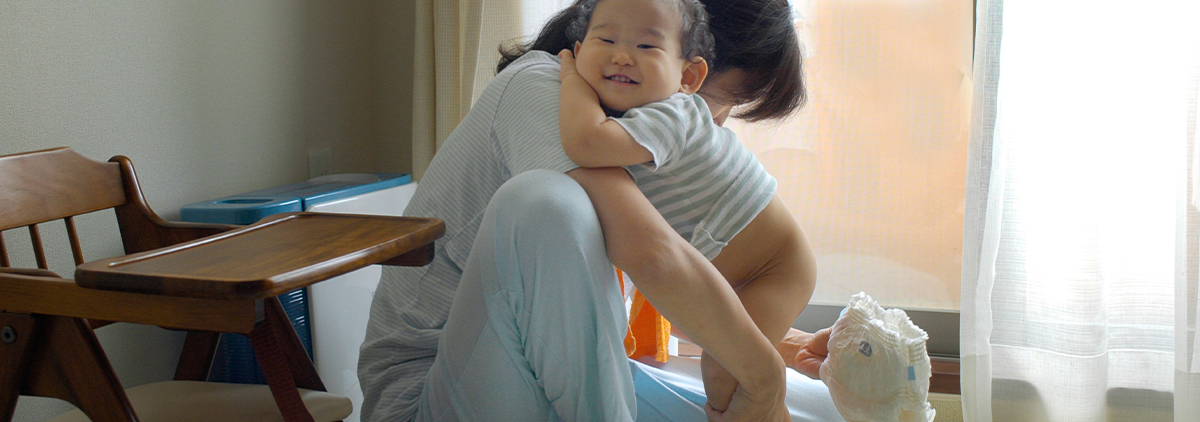Why is the Baby Diapers market growing so fast in India and Southeast Asia?
A brief overview of the Baby Diapers market in Asia-Pacific
Baby Diapers are booming in the APAC region. According to figures from Euromonitor analysts, not only is Asia-Pacific the first Baby Disposable Hygiene market by size, but also shows high potential in the period between 2020 and 2025[1]. In particular, APAC emerging markets such as the ASEAN five countries (Malaysia, Indonesia, the Philippines, Thailand and Vietnam) are uniquely positioned, as they register an increasing population combined with an annual GDP well above the global average. All together, these countries represent the third largest global market for Baby Diapers.
The progressively dominant position of Asia-Pacific hasn’t gone unnoticed. In recent years, the economic and social progress of the area has been a pull factor for investments, leading to rising employment as well as higher productivity and wages, also causing a boost in mass consumption of disposable nonwoven products. The most prominent drivers of this expansion have been rising health awareness and spending power, product availability, and last but not least, a not fully tapped consumer base.
Within the APAC region, this analysis focuses on two specific areas: Southeast Asia and India. Collectively, Southeast Asia (SEA) accounted for $5 billion in retail sales in 2019, compared to India's $2 billion. Both SEA and India are going through rapid development, at CAGRs of respectively 8% and 16% over the next five years.
Baby Diapers market in Southeast Asia and India
Southeast Asia and India are among the fastest growing areas in the world as far as the Disposable Hygiene industry is concerned. In value terms, Southeast Asia is forecast to grow at twice the rate of the global market to 2023[2], its largest category being Baby Diapers due to demographic growth. India, albeit experiencing double the growth of Southeast Asia, accounts for less than half its market size, therefore representing a golden opportunity for established brands and Private Label manufacturers alike. Both local players and multinational companies are investing in the regions, looking to capitalize on improving living standards, progressively higher literacy levels, and urbanization.
Of the several countries comprising SEA, the ASEAN five countries (Malaysia, Indonesia, the Philippines, Thailand and Vietnam) are the most promising. Notably, Indonesia and Vietnam are gaining traction in retail, driving growth in the region in a meaningful way. In 2017, Vietnam's and the Philippines' GDP growth was about 7%, even higher than China.
Across both Southeast Asia and India, the most powerful forces at play are improving purchasing power, consumers becoming more conscious about health issues, and public expenditure promoting modern hygiene practices and products. India is ahead in this regard, with advanced public healthcare facilities being a primary cause of the decline of infant mortality rate. These factors, coupled with a ballooning demographic growth, make these two regions an ideal place for nonwoven hygiene products' manufacturers. As a matter of fact, in 2019, SEA and India own a 20% share of the Asia-Pacific Disposable Hygiene market.
In SEA, a force to be reckoned is the internet. As estimated by a 2019 study by Facebook and Bain & Company[3], SEA grew 2.8X from 90 million digital consumers in 2015 to 250 million in 2018. By 2025, there will be 310 million digital consumers in the region - an increasingly important market segment whose habits are largely driven by inspiration and openness to digital discovery. Indeed, Southeast Asia’s online customers are more open to try new brands compared to their Western counterparts - 70 percent of respondents declare they do not know what or where to purchase before they shop online. It is worth noting, though, that a wider access to the internet is not just a matter of consumer habits: it translates into greater product availability, awareness, and breadth of choice.
The value of ASEAN’s e-commerce sector has expanded sevenfold in just four years , rising from $5.5 billion in 2015 to over $38 billion in 2019. That said, online retail in the region makes up for just 3% of total sales. Countries like China are way ahead at 23 percent. It follows that, if Southeast Asia just catched up with China it would grow by a factor of 8. This figure doubles for India: according to Euromonitor 2019 Report, India's Disposable Hygiene market is only 6% its potential size.
Product-wise, in both India and SEA functionality plays a major role in customer acquisition and retention. Leak protection, comfort, usability, odor control, coolness, all-night use: these are the most appealing features for consumers. Disposable night pants have been marketed in SEA and, despite being generally well received - especially in Thailand, they fail to gain mass adoption as they remain prohibitive for most women, ultimately leading to market fragmentation. For an overwhelming percentage of customers, affordable quality is the main focus, as premium products cater to a small minority of high-income earners. As a consequence, the India and SEA market is up for grabs, as local manufacturers struggle with low margins.
Another mainstream trend in Southeast Asia is the consumer preference for disposable pant-style products. In Indonesia, Thailand, and Vietnam, disposable Baby Pants are the most popular format. This is largely due to Baby Pants being remarkably more convenient, as they provide more comfort, protection, and greater freedom of movement. Furthermore, SEA's demographic shift through 2027 show growth in the 1-4 year-old age group that, combined with a decline in newborns, further increases Baby Pants' product-market fit. Still, affordability poses a challenge for manufacturers, as it is difficult to cater Baby Pants to lower-income families.
The feminine hygiene market in Southeast Asia and India
Although Baby Diapers represent by far the most attractive category, the demand for disposable feminine sanitary protection products is gaining traction, especially in Indonesia, the Philippines, Vietnam, and India. By 2024, SEA's and India's female population aging 12 to 54 is going to hit 650 million. As reported by Euromonitor Health Surveys 2019, for half the women in India and Indonesia periods are a moderate to high-impact issue. Considering the overlapping between the two categories, the business opportunity is huge.
In addition, governments and NGOs are investing more and more into raising health awareness through several initiatives. Supporting the use of female hygiene products is also part of the industry's ongoing effort to educate the customer base, thereby establishing a stronger foothold in the regions.
Sustainability trends in Southeast Asia and India
Once a niche trend, sustainability has secured a place in APAC's mainstream. According to a 2018 report by Nielsen, corporate sustainability is a major concern for 81% of customers worldwide - 85% if we just look at millennials[4]. This is even more true in Asia-Pacific, where millennials comprise 25% of the workforce[5]. As a comparison, there are more millennials in China than people in the United States[6].
Therefore, it doesn’t come as a surprise that, according to Euromonitor Lifestyle surveys, in 2019, one in two respondents in India and Southeast Asia declare they try to positively impact the environment through their everyday actions. Indeed, sustainability is shaping consumers’ choices, and the industry is taking notice. Manufacturers of all sizes are incorporating sustainability into their product lineup and storytelling, focusing on breathable, skin-friendly, fragrance-free Baby Diapers for all budgets. In India, for instance, the eco-friendly pads are available in the mass and premium segments.
In conclusion, Southeast Asia and India are among the fastest growing areas in the world in the context of the Baby Disposable Hygiene industry. Still, the bulk of their potential is untapped, making them a golden opportunity for both established brands and private label manufacturers.
Baby Pants are booming in Asia-Pacific , especially in Southeast Asia and India. Looking for a solution expressly designed to meet these specific market needs? Get in touch!


